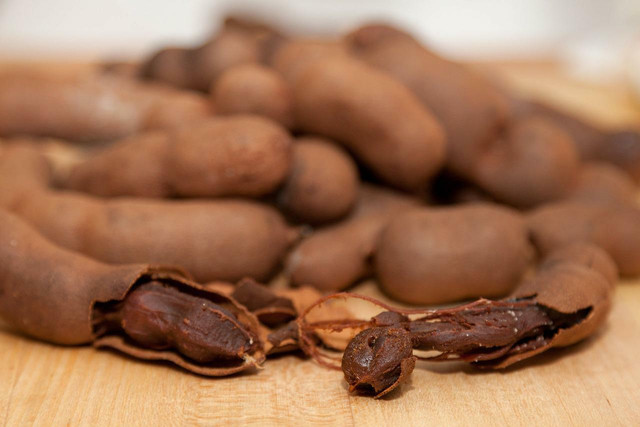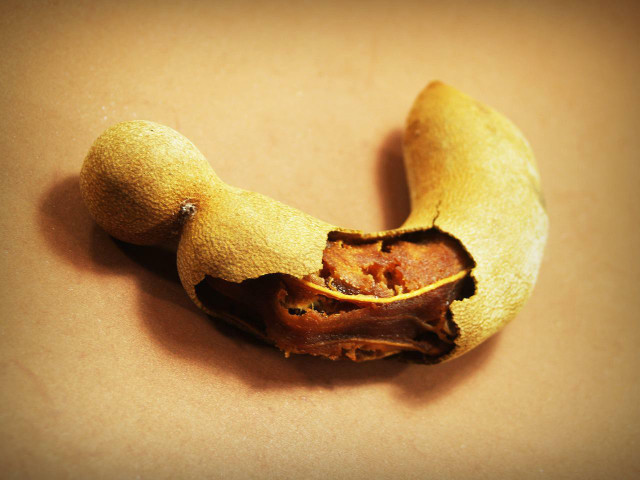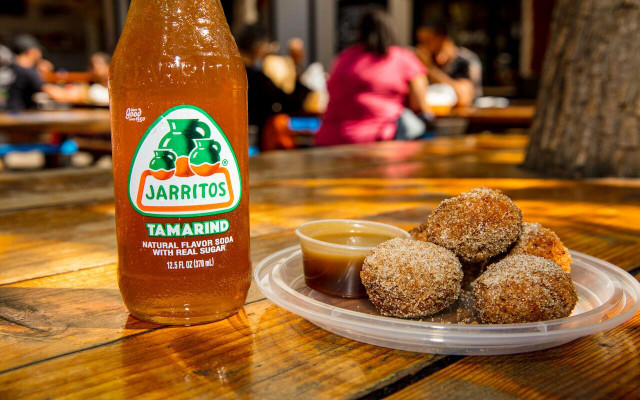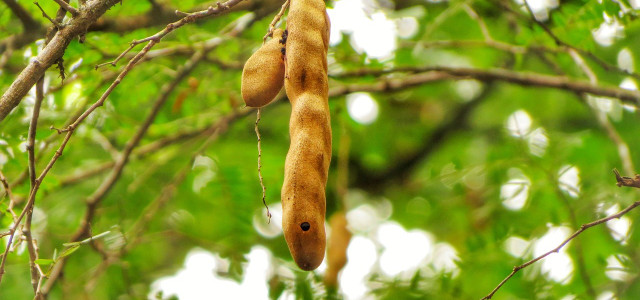What is tamarind? The sweet and sour fruit of the tamarind tree has culinary and medicinal uses. You have probably eaten it without even knowing it! Read on to find out more.
Tamarind or Tamarindus indica is a type of tree native to Africa, but it has been growing in India and Southeast Asia for so long it is often considered to be native there, too. Tamarind trees are also found in tropical regions across the globe, and they can be found in abundance in Mexico. The trees produce pods that contain the fruit which is used in cooking and medicine. The pulp, seeds, and leaves of the tamarind can be used or consumed. The trees grow to be quite large and are often planted to give shade in hot and sunny places.
What Does Tamarind Taste Like?

Tamarind pods contain seeds that are surrounded by a fibrous, fruity pulp. The taste is both sweet and sour: the younger the fruit, the more sour the taste. The pleasant sour-tart flavor is less acidic than lemon or lime juice, and the sweetness is deeper and more interesting than just sugar. You may have tried the Mexican drink Agua de Tamarindo, which is made from fresh pods, water, and sugar to create a refreshing sweet and sour drink.
Tamarind Uses in Cooking



Tamarind pulp is widely used for cooking across the world and is found in a lot of recipes from South and Southeast Asia, India, Mexico, and the Caribbean. It is usually used as a souring agent, or to give a tart-sweet note to a sauce or a chutney. Tamarind pulp is one of the ingredients in Worcestershire sauce, HP sauce, and is also used often as a souring agent in curries. If you’ve ever eaten pad thai, you have probably eaten tamarind!
If you need some tamarind for a recipe, you are most likely to find it in one of three types:
- Whole pod. This is the least processed form of tamarind available. You just have to peel or crack the pod (much like a peanut) from the bean-like pod to remove the seeds and pulp from the inside.
- Block form. After removing the outside skin of the pod, the pulp and seeds are then compressed into a block. To use this, you normally pull off a golf-ball-sized piece and soak it in a little hot water to loosen it. The pulp is then pushed through a sieve to remove the seeds and the stringy parts to create a paste that you can add to the recipe. You can also eat the seeds. The block lasts a long time in the fridge when wrapped well, or stored in a lidded container.
- Pre-made concentrate. You can usually find this in a squeezy bottle or in a jar. The fruit and seeds will have been processed and cooked down to achieve the desired consistency. There are often stabilizers and preservatives added to increase the shelf life.
Is Tamarind Healthy?



Many parts of the tamarind plant have long been used in traditional medicines for the treatment of a wide variety of ailments and diseases. Tamarind pulp has potential antioxidative effects and has been used in traditional medicine to treat bowel complaints, wounds and rheumatism. Research suggests that the tamarind pulp has the potential to regulate lipids in the blood and therefore could have a positive effect on those of us with high cholesterol, and therefore at a higher risk of cardiovascular issues.
Tamarind is essentially a fruit, so is high in naturally occurring sugars. But 100 grams contains 23 percent of your daily recommended intake of magnesium, which can help to lower blood pressure and has anti-inflammatory properties. It is also high in vitamin B1 and potassium.
Be aware that one of the most common forms of tamarind available, is candy. This will likely contain added sugars and sweeteners, and is quite different from the lesser processed tamarind pulp and therefore is not recommended in large quantities. There were reports of Mexican tamarind candy and lead contamination, but it seems to be to do with the acidic properties of tamarind causing lead in the ceramic glaze to leech, rather than tamarind being a natural source of lead. As with all sweets, consume in moderation.
Read More:
- Indonesian Jamu Recipe (Turmeric Ginger Herbal Drink)
- Simple Vegan Dan-Dan Noodles
- Vegan Fish Sauce-The Vegan No-Fish Sauce You Can Make At Home
Do you like this post?






